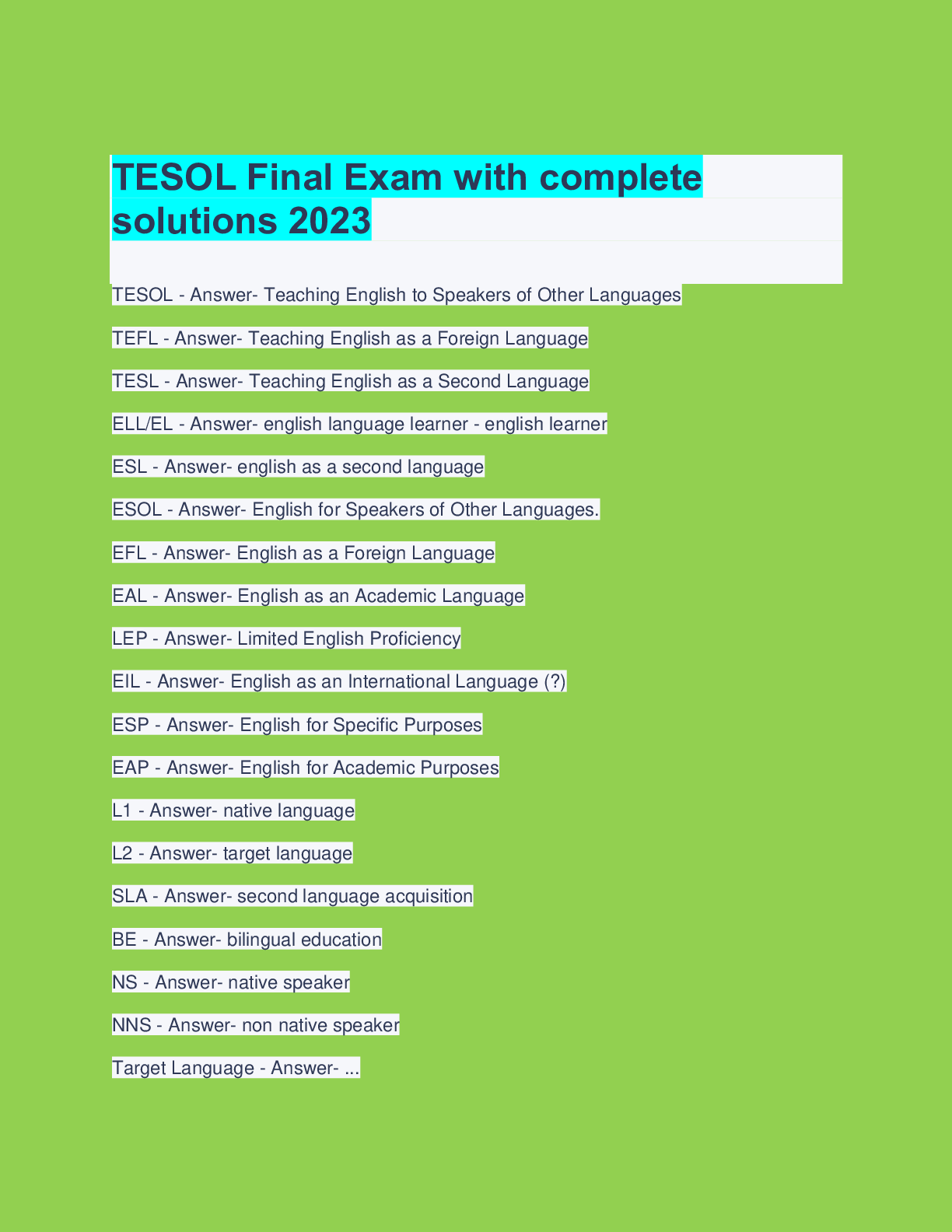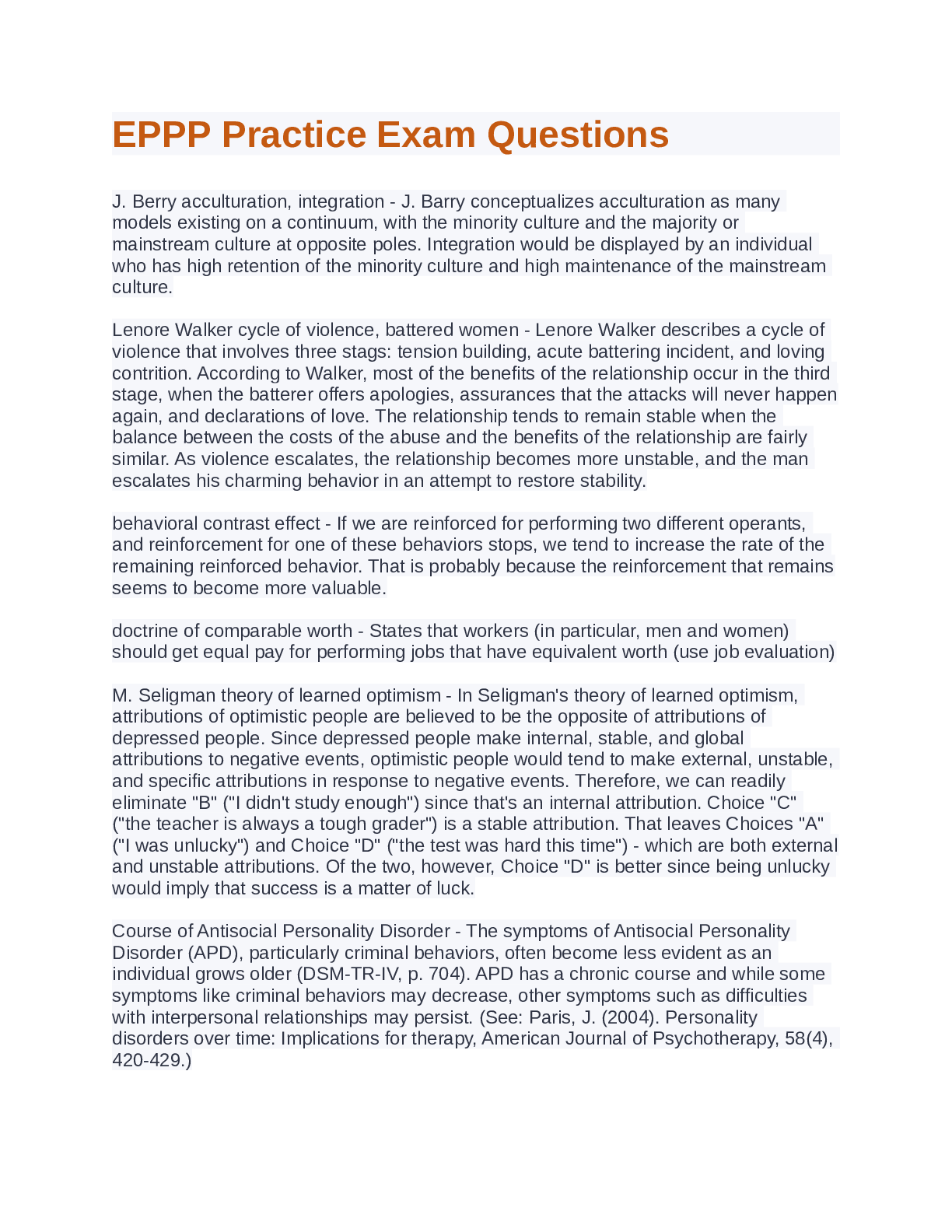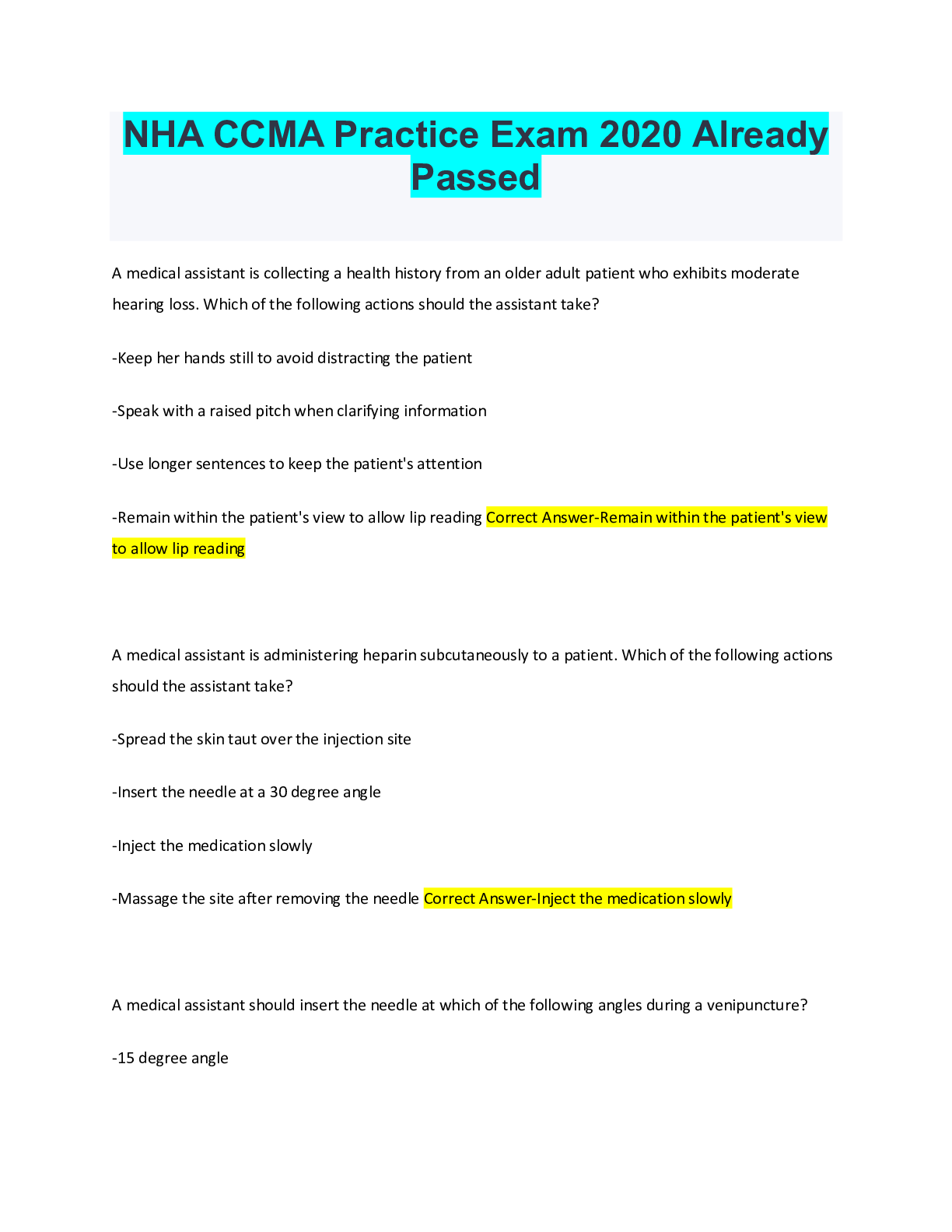BioChemistry > EXAM REVIEW > BIOCHEM C785:-Aerobic Carbohydrate Metabolism [randomized}]Questions with complete solutions New 202 (All)
BIOCHEM C785:-Aerobic Carbohydrate Metabolism [randomized}]Questions with complete solutions New 2021 Summer
Document Content and Description Below
Given a situation/diagram/scenario describing aerobic metabolism, the student describes how sugars are used to create ATP. Also, Given a scenario describing aerobic metabolism, the student describes... how fatty acids are used to create ATP. (4 questions on the assessment) 12. Which of the following nutrients cannot be metabolized to a substance that can participate in the production of ATP via aerobic cellular metabolism? Vitamin E Complex Carbohydrates Proteins Lipids Feedback Correct! Vitamin E is not involved aerobic respiration. 19. Carbohydrates, fatty acids, and amino acids can all enter the citric acid cycle through which molecule? Acetyl-CoA Pyruvate NADH ATP Feedback Correct! Carbohydrates, fatty acids, and amino acids all enter the citric acid cycle through acetyl-CoA. 31. NADH and FADH2 are two cofactors made in the citric acid cycle. They then donate the ______________________ they gained in the citric acid cycle to the electron transport chain. oxygen ATP glucose electrons Feedback Correct! NADH and FADH2 carry high energy electrons to the electron transport chain. 7. While barbiturates are potent inhibitors of Complex I in the Electron Transport Chain, they do not completely block electron transport due to: FADH2 donates electrons to Complex I FADH2 donates electrons to Complex II NADH is able to interact directly with Complex II increased activity of Coenzyme Q10 Feedback Correct! FADH2 donates electrons to Complex II, and the electrons donated to Complex II can still move through the ETC. 24. Which of the following occur during aerobic respiration? (Choose all that apply.) NADH and FADH2 are produced from NAD+ and FAD during the citric acid cycle. NAD+ and FAD are produced from NADH and FADH2 during the citric acid cycle. NADH and FADH2 donate electrons to the ETC, regenerating NAD+ and FAD. NAD+ and FAD donate electrons to the ETC, regenerating NADH and FADH2. Oxygen accepts electrons, producing water. Water donates electrons to the ETC, producing oxygen. Feedback Correct! NADH and FADH2 are produced from NAD+ and FAD during the citric acid cycle, NADH and FADH2 donate electrons to the ETC, regenerating NAD+ and FAD and oxygen accepts electrons, producing water. 30. In human cells, glycolysis takes place in the cytoplasm. The products of the glycolysis will enter the _________________ to continue with aerobic respiration. nucleus cytoplasm ribosomes mitochondria Correct answer mitochondria Feedback Incorrect. If you chose the option 'nucleus', the answer is incorrect. The nucleus is the site of DNA replication and mRNA transcription. If you chose the option 'cytoplasm', the answer is incorrect. The products of glycolysis will remain in the cytoplasm under anaerobic conditions and undergo fermentation. If you chose the option 'ribosomes', the answer is incorrect. The ribosomes are the site of protein synthesis and occurs in the cytoplasm. The correct answer is 'Mitochondria'. 17. Which of the following is a coenzyme? (check all that apply) CoA ATP FADH2 Q10 Feedback Correct! CoA (coenzyme A), FADH2 and Q10 (coenzyme Q) are all coenzymes that function in aerobic respiration to help generate ATP. 27. Which of the following is an accurate statement about glycolysis? Glycolysis is the breakdown of a glucose molecule that requires the presence of oxygen. Glycolysis results in a net production of four ATP molecules. All of these The final products of glycolysis are two molecules of pyruvate. Correct answer The final products of glycolysis are two molecules of pyruvate. Feedback Incorrect. If you chose the option 'Glycolysis is the breakdown of a glucose molecule that requires the presence of oxygen', the answer is incorrect. While glycolysis does break down glucose, this process can occur independently of oxygen. The electron transport chain requires oxygen. If you chose the option 'Glycolysis results in a net production of four ATP molecules', the answer is incorrect. Glycolysis results in the net production of 2 ATP. If you chose the option 'All of these', the answer is incorrect. While glycolysis does break down glucose, this process can occur independently of oxygen. The electron transport chain requires oxygen. Additionally, glycolysis results in the net production of 2 ATP. So these two answers would not be correct. The correct answer is 'The final products of glycolysis are two molecules of pyruvate'. 41. ATP has two phosphate groups. True False Feedback Correct! The answer is false. Adenosine with two phosphates is called ADP (adenosine diphosphate). 37. What molecules that serve as electron carriers are generated by the Citric Acid Cycle? ATP and GTP NADH and FADH2 glycogen and fatty acids CO2 and NADH Correct answer NADH and FADH2 Feedback Incorrect. If you chose the option 'ATP and GTP', the answer is incorrect. ATP and GTP are not electron carriers and ATP is not generated by the citric acid cycle. If you chose the option 'glycogen and fatty acids', the answer is incorrect. Glycogen and fatty acids are neither electron carriers nor are they generated by the citric acid cycle. If you chose the option 'CO2 and NADH', the answer is incorrect. While CO2 and NADH are both generated by the citric acid cycle, CO2 is not an electron carrier. NADH carriers electrons to complex I of the electron trasnsport chain. The correct answer is 'NADH and FADH2'. These are generated in the citric acid cycle and deliver electrons to the ETC. 28. True or False: Glucose is the only food source that can make acetyl Co-A. False True Correct answer False Feedback Incorrect. If you chose the option 'true', the answer is incorrect. Lipids, amino acids, and carbohydrates can all be used to generate acetyl Co-A. The fatty acids of lipids can be converted to acetyl-CoA in beta oxidation and amino acids can be converted to acetylCoA in the process of deamination. The correct answer is 'False'. 35. Glucose that is phosphorylated after entering the cell cannot move through GluT transporters. True False Feedback Correct! The answer is true. Glucose that is phosphorylated after entering the cell cannot move through GluT transporters. 13. Which of the following processes does NOT take place in the mitochondria of a cell? Production of CO2 in the citric acid cycle Production of FADH2 Creation of a proton gradient Conversion of pyruvate to lactic acid Correct answer Conversion of pyruvate to lactic acid [Show More]
Last updated: 2 years ago
Preview 1 out of 18 pages

Buy this document to get the full access instantly
Instant Download Access after purchase
Buy NowInstant download
We Accept:

Reviews( 0 )
$8.00
Can't find what you want? Try our AI powered Search
Document information
Connected school, study & course
About the document
Uploaded On
May 09, 2021
Number of pages
18
Written in
Additional information
This document has been written for:
Uploaded
May 09, 2021
Downloads
0
Views
88


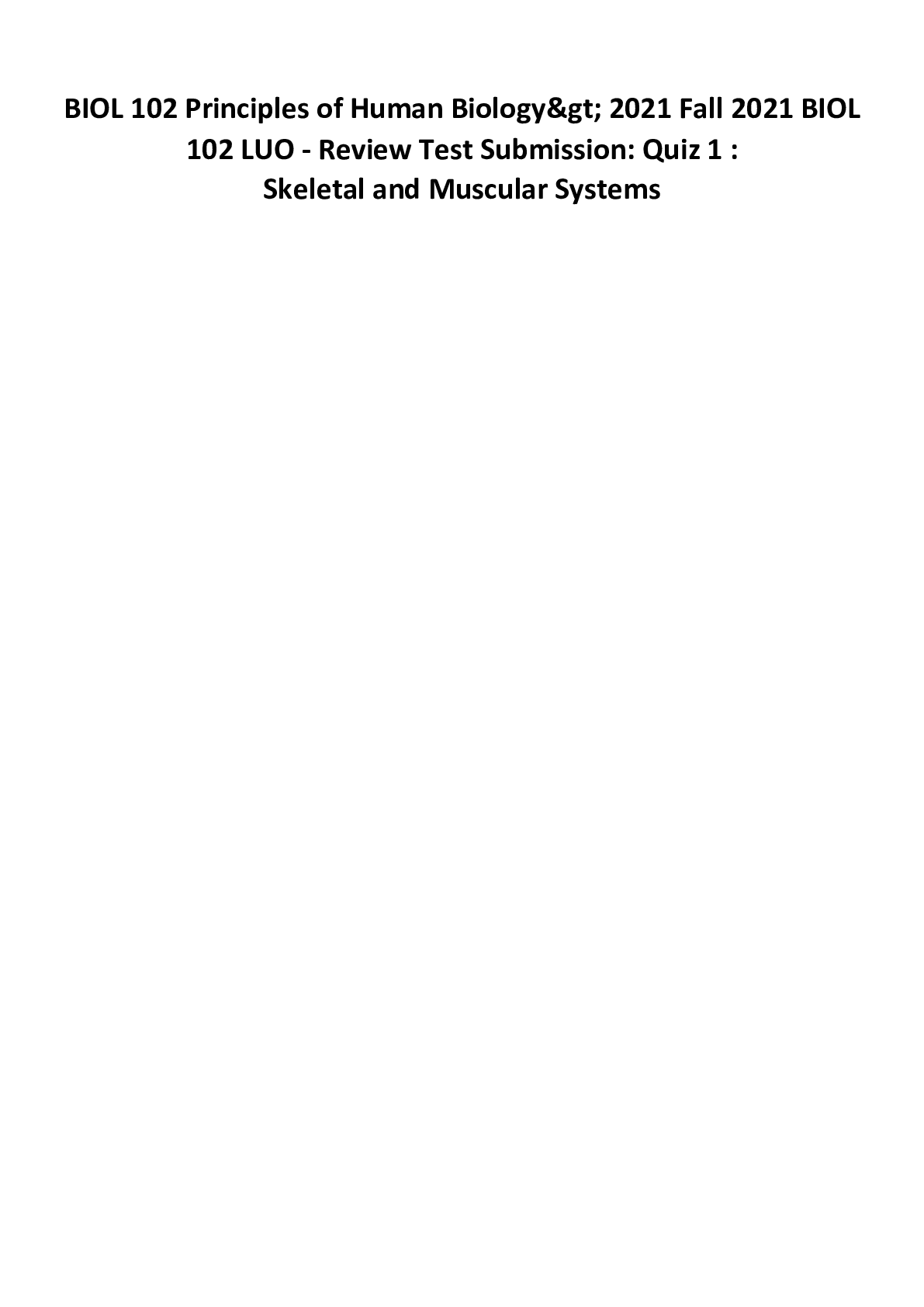
.png)
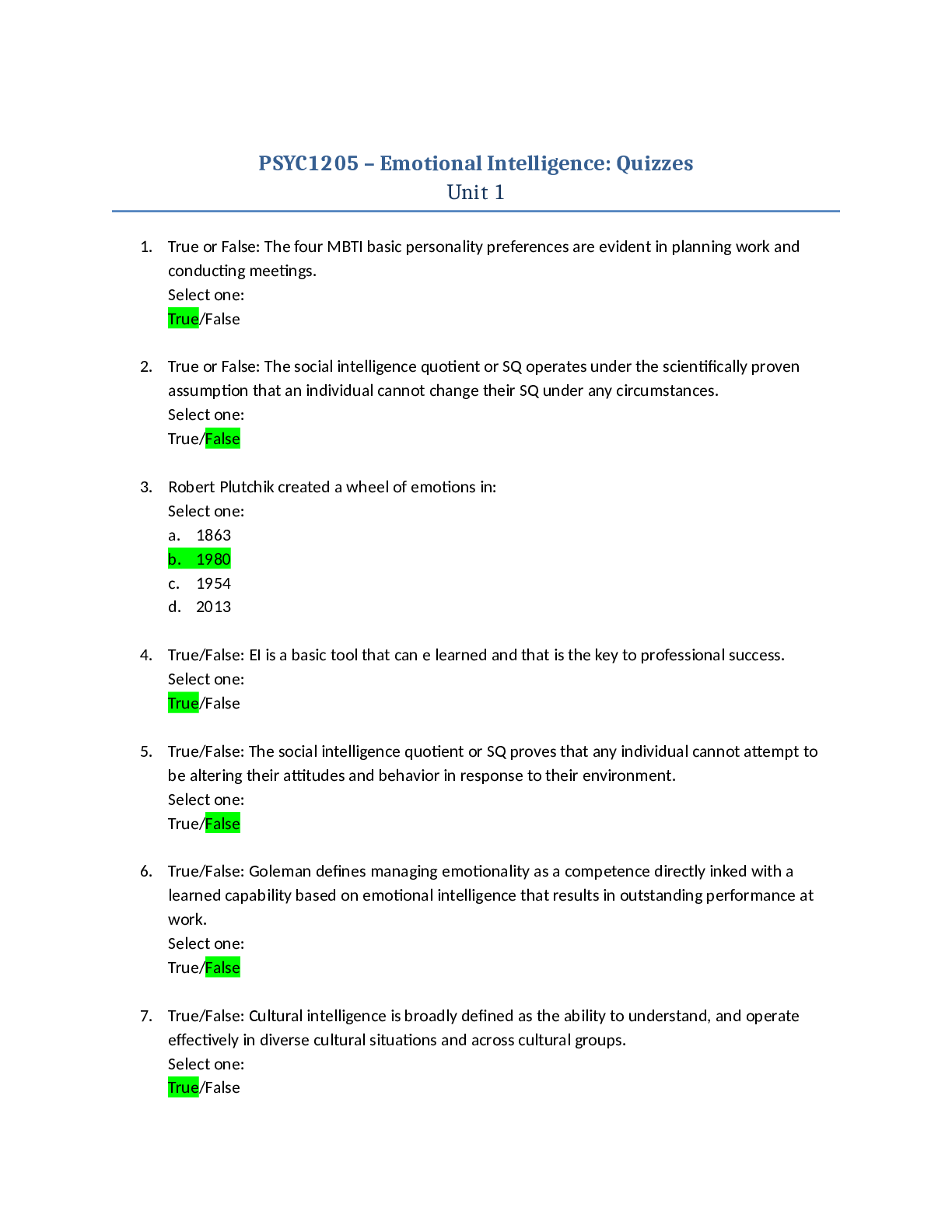

.png)

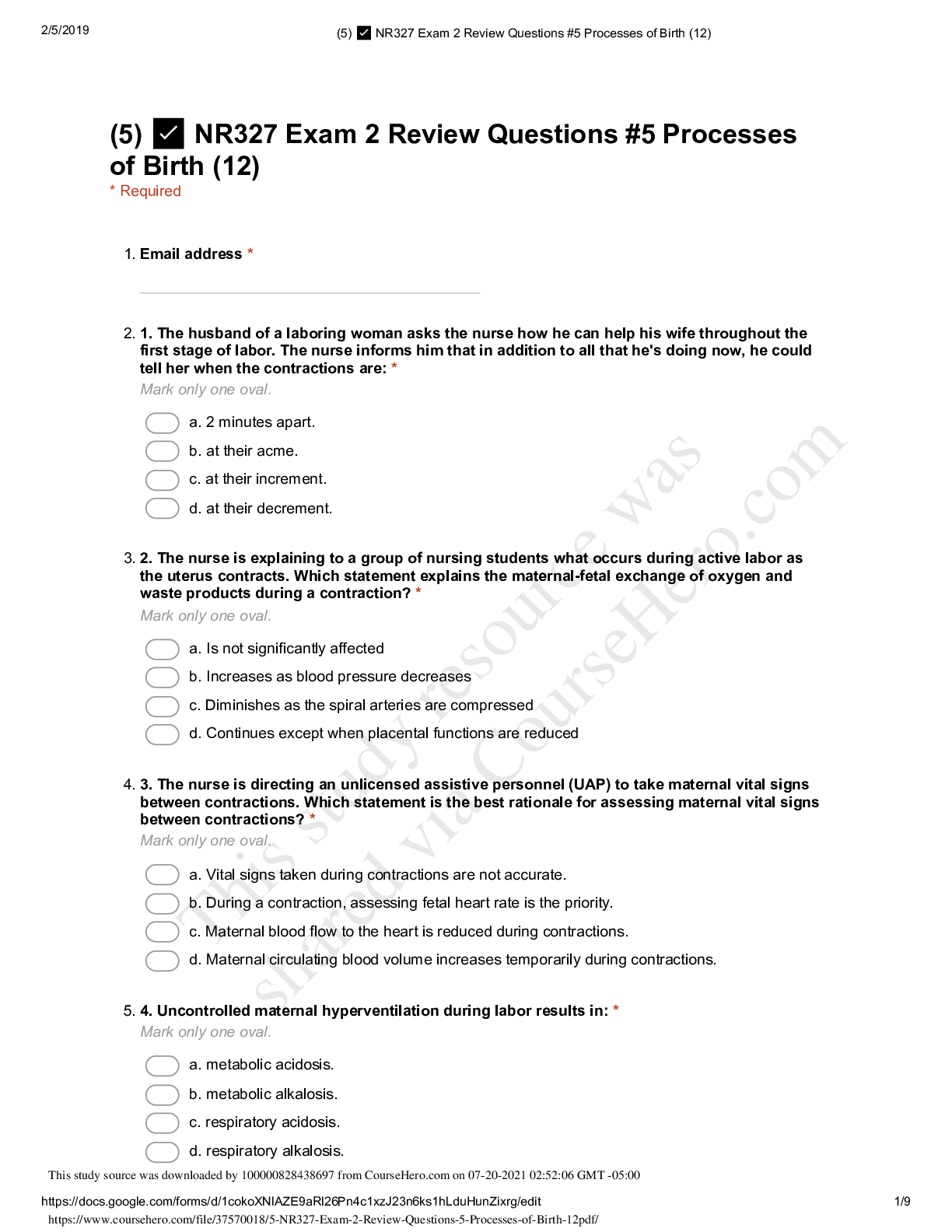

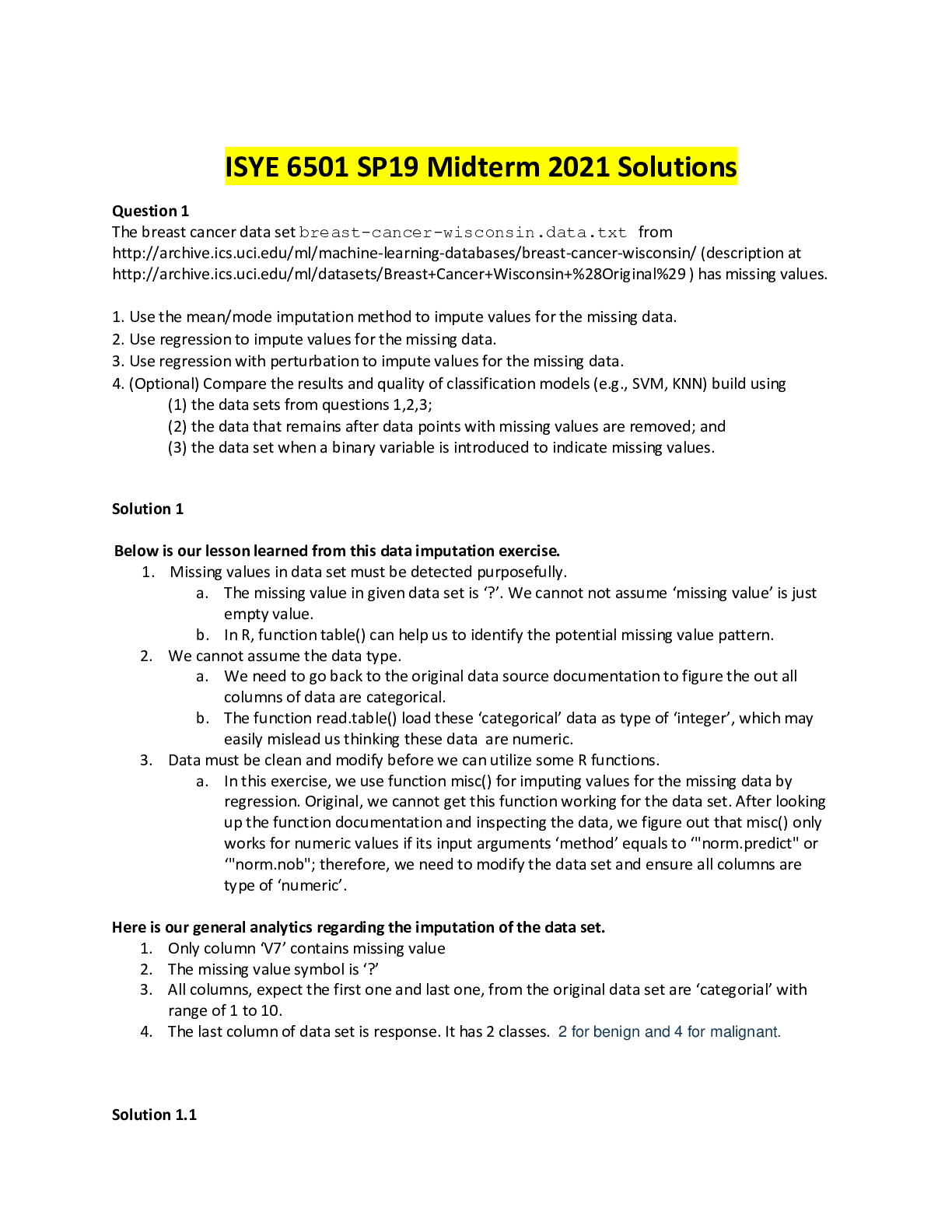
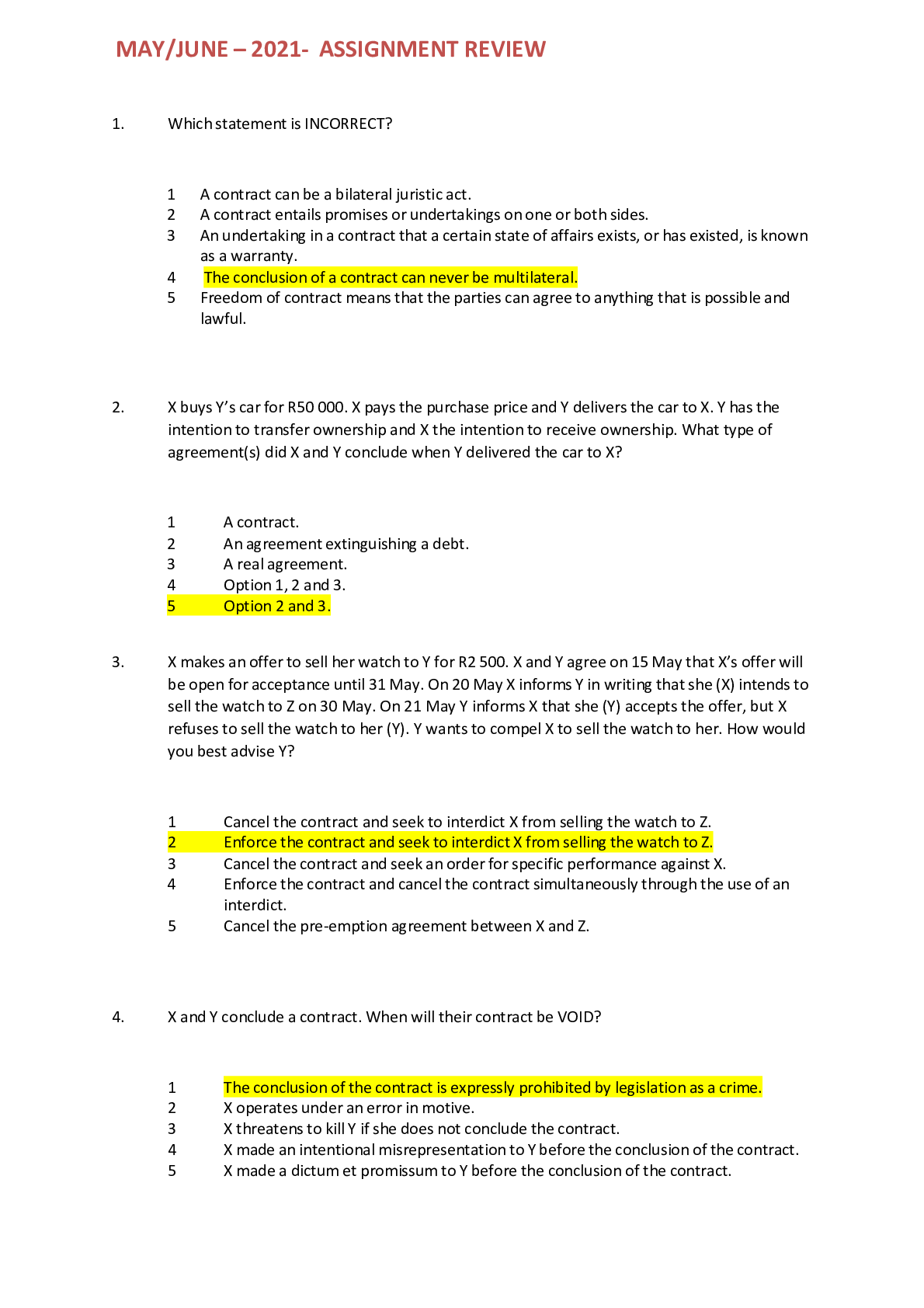
.png)
.png)
 WITH COMPLETE SOLUTIONS.png)


